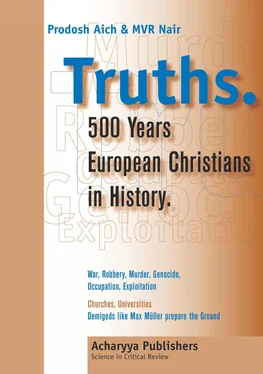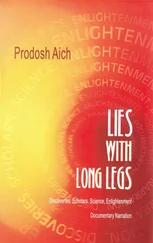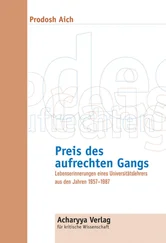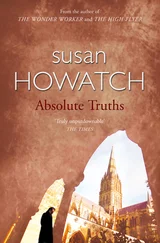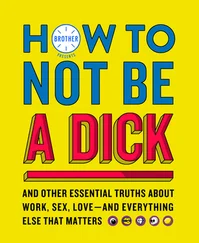Franz Boppinvents his owngrammar and translatesSanskrit texts. At that time in Paris there was only a single person, as reported, who claimed to have known Sanskrit: Antoine Léonard de Chézy. He also claimed to have taught himself. How? How can we know? His Sanskrit was, however, not up to the mark, as reported by Franz Bopp. This was the reason why Franz Bopphad to invent his own learning method. But we have detected two other references: Friedrich von Schlegeland Alexander Hamilton. They were engaged with Sanskrit in Paris even before Antoine Léonard de Chézy.
Getting into these two references we come across documents telling incredible stories. Antoine Léonard de Chézyworks in the Egyptian department of the Royal Museum in Paris. The administrators of the artefacts from colonial booty were entitled to “study tours” to Egypt. When in 1803 such a trip is due Antoine Léonard de Chézyfalls ill. As luck would have it, however, Louis Mathieu Langlèswas there, that “news pool” for “Orient enthusiasts” in Paris. We remember him. So, Antoine Léonard de Chézylearns from the young German Helmine von Hastfer(we remember her too), a friend of Dorotheaand Friedrich von Schlegel, who were living temporarily in Paris, that Friedrich von Schlegeltakes lessons in Sanskrit from an interned Englishman called Alexander Hamilton.
Friedrich von Schlegelputs it on record that he has learnt Sanskrit from Alexander Hamilton. We shall deal with the quality of the lessons a little later. There is also evidence that Alexander Hamiltonand Antoine Léonard de Chézymeet each other in Paris rather frequently. Antoine Léonard de Chézyhimself maintains repeatedly that he was not interested in Sanskrit at all and knew nothing about Sanskrit before he met Alexander Hamilton. He was an Egyptologist only.
Hereafter there are two different versions of this small (hi)story within history. One version has it that the great misfortune of missing the study tour to Egypt due to sudden illness was more than compensated by the opportunity to learn Sanskrit from Alexander Hamilton. The other version says the meetings with Alexander Hamiltonmade him curious about Sanskrit. He learnt the language, however, “secretly” and “by teaching himself” and definitely after Alexander Hamiltonhad left France.
We remember Franz Bopp’s report to Professor Windischmannaccording to which Antoine Léonard de Chézyhas been engaged with Sanskrit since 1808. But does it really matter? Swindles remain swindles, isn’t it? Even with the best of our efforts, we are unable to understand how a Frenchman in Paris could have learnt a perfectly developed language like the Sanskrit without a teacher, without a grammar and without any help whatsoever. But why complain! “Modern historians” and Indologists have not had and do not have any difficulty so far, in putting up with these incredible stories. They just believe in them. One must develop in this culture the ability to believeand forget the necessity of knowing. Why knowing?
*****
We are now compelled to extend our search. Who is this Alexander Hamiltonwho brought Franz Bopp,at least indirectly, to Sanskrit and thus contributed to the spread of Sanskrit in Europe? Our search leads us ultimately to the original document and there we read the following lines: “In 1795 (wasn’t it in 1794?) the government of the French Republic founded the École des Langues Orientales Vivantes, and there Alexander Hamilton (1762–1824), one of the founding members of Asiatic Society of Bengal, held prisoner on parole in France at the end of the Peace of Amiens in 1803, became the first person to teach Sanskrit in Europe.”
Arthur Llewellyn Basham(1914–1986) handed down these lines to the posterity in his best-known book The Wonder that was India, London 1954, p. 6. He wasn’t just an anybody. He wrote quite a few books on the “British colonial period” in India. He was a professor for oriental studies at the university in London, a Mecca for many Indians studying “history” abroad. His senior students occupy almost all leading positions at Indian universities and research institutions for the study of ancient history of Bharatavarsa at present. In return, these disciples have ensured that the “scientific spirit” of Arthur Llewellyn Bashamis adhered to in the Republic of India even today.
Arthur Llewellyn Bashamdoes not tell us whether he checked scrupulously the source of his information about Alexander Hamilton. After all, he was writing about a man who lived almost 200 years ago. Obviously he did not check meticulously enough. This is not necessary whenever the information, gathered indiscriminately, serves a useful purpose. Why should he waste time in a meticulous check of sources? Is it not enough, especially after he has made an outstanding career as a “ scientist” in the in the blond-blue-eyed-white-Christian culture?
We will rather be busy with Arthur Llewellyn Basham. Nevertheless, there are many others who are out to make career in this “scientific” field. They are prompted by their alpha wolvesto detect flaws in the writings of great “scholars” of the past. This is part of a game, called “ research in modern science” in this wonder that is this culture.
We came across a publication of the “American Oriental Society”, volume 51 titled “ Hamilton Alexander (1762–1824) . A Chapter in the early History of Sanskrit Philology , New Haven, Connecticut 1968”. Fourteen years after Arthur Llewellyn Bashampublished his book: The Wonder that was India , London 1954. A Belgian lady called Rosane Rocherproves that the version about Alexander Hamiltoncirculated worldwide by Arthur Llewellyn Bashamis wrong in some facets. She has written in the “Introduction” of her book:
“It is true that various biographical dictionaries do contain notices about Hamilton, but they often offer erroneous information, as will be seen on more than one occasion below. The reference works about the history of Oriental Studies again and again reproduce the same errors; moreover, they are mainly interested in Hamilton as far as his stay in Paris is concerned; apart from his catalogue of the Sanskrit manuscripts of the Imperial Library, they essentially refer to him in connection with an apparently more important Orientalist, namely the one who became Hamilton’s most famous student in Paris – Friedrich Schlegel. ”
We shall deal with the “wrong facets” in a while. Rosane Rocherstarts properly her investigations to trace the origin of Arthur Llewellyn Basham’s error and reports that Theodor Benfey(1809–1881) in his “ opus” Geschichte der Sprachwissenschaft und orientalischen Philologie in Deutschland seit dem Anfange des 19. Jahrhunderts mit einem Rückblick auf die Früheren Zeiten (History of linguistics and oriental philology in Germany since the beginning of the 19th century with a retrospect into earlier periods), Munich 1869, pp. 357–361, was responsible for this red herring.
Читать дальше
